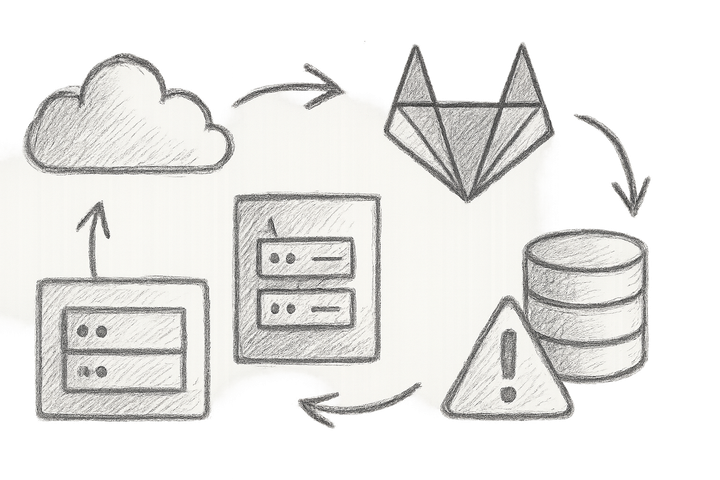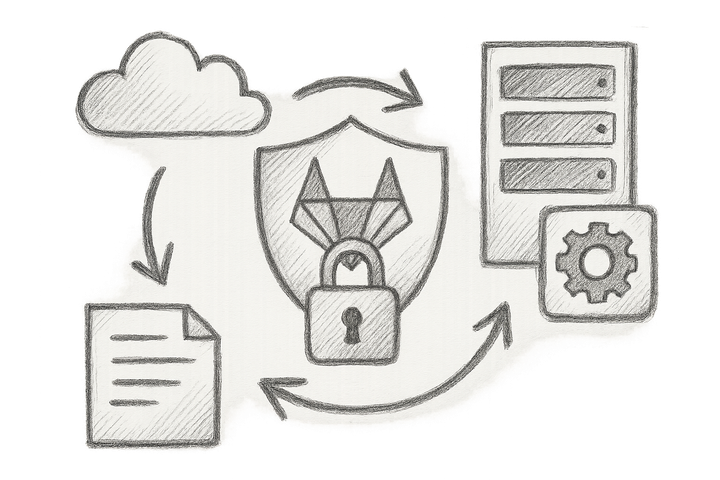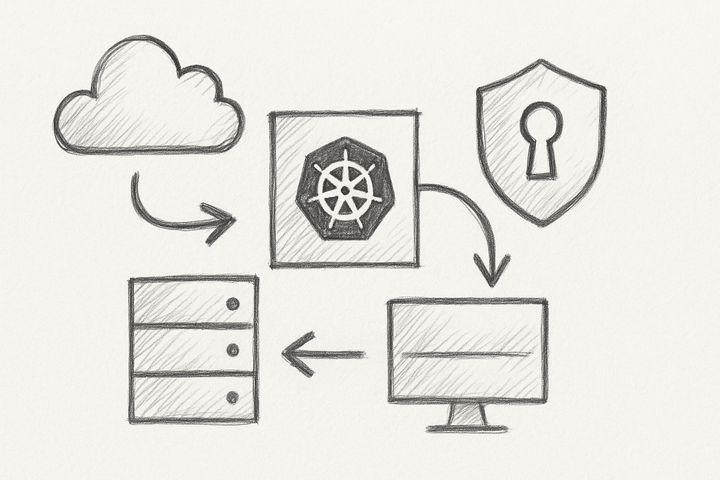Data Collection and Processing Platforms Compared: Pragmatic Fluentd vs Rsyslog vs Logstash for Production-Grade DevOps

The Hidden Battle Behind Every Log Pipeline
Have you ever watched a critical production incident unravel because your logs vanished into thin air or your log pipeline choked the entire observability stack? Chances are, you’ve been stuck wondering if your log collection tool was part of the problem—or the solution. I’ve been in the trenches, wrestling with Fluentd engulfing memory on a Kubernetes cluster, witnessing Logstash nodes buckle under pressure, and cursing Rsyslog’s cryptic configurations while the clock ticks down. The stakes? Not just inconvenience, but risking your system's very reliability. Choosing your logging platform wrong is like betting the farm on a dodgy tractor.
1. Introduction: The Data Collection Challenge That DevOps Can’t Afford to Ignore
Observability is DevOps’ lighthouse: every log, trace, and metric a spark that guides you through outages and capacity planning. Yet, the reality behind data collection resembles more of a guerrilla warfare campaign—a clattering mess of exploding log volumes, unpredictable bursts of noisy telemetry, and silent drops caused by misconfigured forwarders. The fallout? Delayed incident detection, frantic firefighting, and high burnout on-call teams.
Fluentd, Rsyslog, and Logstash each brandish their strengths, claiming the crown of supremacy. But the truth? It’s murkier than a Kubernetes pod after an unexpected surge. If you’re hungry for a fuller picture of how these tools slot into the enterprise logging ecosystem, dig into our comprehensive comparison of Enterprise Log Management Platforms and their operational impact.
2. Quick Platform Overviews: Architecture, Core Strengths, and Operational Models
Fluentd: The Flexible Swiss Army Knife
Fluentd is like that handy multi-tool in your pocket—versatile and ready to tackle all sorts of logging challenges. It boasts over 700 plugins, enabling it to route, filter, and transform data from myriad sources. Its gutsy blend of C core with a Ruby layer strikes a balance between extensibility and performance. In diverse, heterogeneous environments riddled with all manner of log formats, Fluentd often feels like the perfect fit. Its layered buffering (memory, file) guards against data loss during traffic spikes—though don’t be fooled, configuring those buffers can feel like trying to tame a wild beast. For 2024, Fluentd’s stable releases hover around v1.15.x Fluentd Official Documentation
Rsyslog: The Lightning-Fast Syslog Veteran
When raw speed is your obsession, Rsyslog is the Formula 1 car of log forwarding. Written entirely in C, it’s a speed demon in high-throughput environments, boasting multi-threaded and asynchronous I/O to slash latency to near zero. Its syntax, however, is the linguistic equivalent of a cryptic crossword—sharp and terse, often making you pause mid-configuration muttering “wait, what?” But put it under pressure processing millions of messages per second, and it doesn’t just hold its own—it dominates. For enterprises evolving vintage syslog setups without tossing the baby out with the bathwater, Rsyslog is turbocharged nostalgia. The latest stable release as of October 2025 is v8.2510.0 Rsyslog Documentation
Logstash: The Heavyweight Pipeline Powerhouse
If Logstash were a boxer, it’d be a heavyweight champ with a complex set of jabs and uppercuts. Built atop the JVM, it provides powerful filtering through the Grok language and supports intricate event processing workflows. It plays seamlessly with Elasticsearch and Kibana as part of the ELK stack, a key reason for its popularity. But all that power has a price: relatively high CPU and memory footprints, and jittery latency during garbage collector pauses that can sneak up at the worst moments. Need complex parsing and enrichment? Logstash will deliver—just don’t expect it to dance lightly. The latest stable version is 9.2.0 as of late 2025 Elastic Logstash Guide.
3. Performance Benchmarks: Throughput, Latency, and Resource Profiles Under Real-World Loads
Raw speed is the shiny trophy everyone chases, but ask anyone who’s faced production mayhem and they’ll tell you performance under duress is a whole different beast. I recall one nightmare incident where Logstash’s JVM heap ballooned uncontrollably during a traffic spike. This was no graceful throttling: entire nodes ground to a halt, triggering cascading slowdowns across the cluster. Meanwhile, a sibling Fluentd cluster soldiered on, hitting only brief backpressure warnings thanks to its buffered queuing. It was a «wait, what?» moment—how could Logstash, the supposed processing juggernaut, collapse like that?
Throughput and Latency
Rsyslog laughs in the face of volume, reliably processing millions of syslog messages per second at sub-millisecond latency. Fluentd tracks close behind, capitalising on intelligent buffering to smooth bursts. Logstash, versatile as it is, usually needs careful JVM tuning to avoid GC-induced latency spikes under heavy throughput.
Resource Consumption
Resource budgets matter. Logstash slurps multiple gigabytes of JVM heap per node like a thirsty marathon runner chugging water. Fluentd’s consumption is moderate but beware plugin overload or heavyweight Ruby filters—they can inflate memory usage faster than you can spot them. Rsyslog’s lean, single-process C design is the sprinter here, making it ideal for edge deployments or resource-tight environments.
4. Plugin Ecosystem Deep Dive: Extensibility, Maintenance, and Real-World Fit
Fluentd’s plugin treasure trove is both a blessing and a curse. With its plethora of over 700 plugins, you can pretty much gulp down any log format or send it anywhere—but the quality varies wildly. I’ve lost hours chasing down plugins whose maintenance hadn’t seen daylight since the previous decade. Overloaded or deprecated plugins can introduce latency spikes or outright incompatibilities. My survival tip? Vet every plugin rigorously and trust only those with lively active communities.
Rsyslog takes a minimalist, battle-tested stance. Its plugin set is focused on core capabilities—RELP forwarding, TLS encryption, database outputs—and these tend to be rock solid, battle-hardened, and reliable under fire.
Logstash’s plugin realm is vast, from filters to codecs to outputs. But don’t fall for the temptation to drown your pipeline in grok filters and Ruby scripts. Complex pipelines can invite unpredictable garbage collector storms and performance cliffhangers. Profile and benchmark relentlessly.

5. Deployment Patterns and Use Cases: Matching Tools to Operational Contexts
Fluentd for Kubernetes Edge Collection
Fluentd DaemonSets on Kubernetes have become the de facto edge log collectors, trusted for their flexibility and containerised plugin ecosystem. But a word of warning: excessive buffering can cause pod restarts under heavy load, turning your logs into a dance of chaos and frustration.
Rsyslog for Enterprise Syslog Aggregation
Traditional enterprise environments with secure, high-speed forwarding needs swear by Rsyslog clusters. Their lightweight footprints mean they slide effortlessly into constrained infrastructures, reminiscent of reliable log sentinels from years past.
Logstash for Centralised Complex Pipelines
Position Logstash in your central pipeline for ingesting, parsing, and enriching logs before sending them to Elasticsearch. If your use case demands real-time anomaly detection or event correlation, its complex filters shine—but keep those JVM health checks close.
6. Security and Maintainability: Operational Empathy for Long-Term Success
The log pipeline isn’t plumbing—it’s the nervous system of your observability. Missteps in SSL/TLS configs between forwarders and receivers aren’t just embarrassing—they open the door to data leakage or denial of service.
Let me share a war story: I once inherited a cluster where Fluentd was running as root with directory permissions generous enough to let a toddler wreak havoc. Within days, one compromised pod was injecting malicious logs to poison forensic trails. Lesson learned the hard way: enforce role separation and least privilege. No exceptions.
Maintainability is another beast; monolithic config files turn into unmanageable leviathans. Modularise configurations, version-control every tweak in Git, and automate syntax validation (rsyslogd -N1, fluentd --dry-run) to avoid those delightful midnight production tantrums.
Always encrypt your log data in transit and at rest, enforce mutual TLS if possible, and prune your plugins absolutely mercilessly to keep the attack surface minimal.
7. The “Aha Moment”: Rethinking Log Collection Beyond Raw Performance
Here’s the clincher: these platforms aren't mere log forwarders—they're critical data processors. Embracing OpenTelemetry’s metadata-first approach can utterly transform your observability. Enrich logs with Kubernetes metadata during ingestion, filter out noise early, and enforce structured logging to slice through incident diagnostics like a hot knife through butter.
A “wait, what?” moment I had was realising that your platform choice isn’t just about throughput, but how well it aligns with your overarching DevOps goals. Remember, a log dropped at ingestion is an incident unseen.
Explore how these choices ripple into your monitoring and threat detection strategies in our pragmatic take on network security monitoring alongside DevOps observability.
8. Forward-Looking Innovation: What’s Next in Data Collection and Processing?
We’re witnessing the slow eclipse of traditional forwarders by cloud-native and serverless logging architectures. Fluent Bit is carving out a niche—a featherweight Fluentd sibling designed for nimble edge collection, backing off to richer processors downstream.
OpenTelemetry’s consolidation of metrics, traces, and logs into unified ingest streams simplifies pipelines—but demands processors that are extensible and adaptable.
Even more intriguing: AI and ML-driven log processing are emerging, cutting through noise, detecting anomalies autonomously, and slashing toil before data ever reaches your dashboards. Suddenly, the chaos of log management might just bow to automation and intelligence.
9. Conclusion and Actionable Next Steps
Recommendations:
- Looking for lightweight edge collection with plugin versatility? Go Fluentd (or Fluent Bit for ultra-light edge use).
- Need raw speed and low resource consumption for syslog? Rsyslog is your dependable rocket.
- Require complex event processing and rich enrichment? Logstash is the heavyweight champ—just keep a hawk’s eye on resource usage.
Tips:
- Benchmark early and benchmark often under realistic loads with your specific data formats.
- Modularise your configuration and automate validation to dodge those unforgettable production meltdowns.
- Prioritise security: encrypt all log traffic, enforce least privilege, and perform regular audits.
Ongoing Checklist:
- Monitor forwarder resource footprints and error logs vigilantly.
- Keep plugins up to date; prune dead weight mercilessly.
- Plan for scalability to meet growing and evolving observability needs.
References
- Fluentd Official Documentation — fluentd.org
- Rsyslog Documentation — rsyslog.com/doc
- Elastic Logstash Guide — elastic.co/guide/en/logstash
- Edward Thomson, Mastering Fluentd, O’Reilly, 2024
- OpenTelemetry Logging Specification — opentelemetry.io
- “Why Kubernetes Logging Still Haunts Us” — DevOps Enterprise Forum, 2025
- “Operational Lessons from Multi-Tenant Logging Clusters” — SRECon 2025, Heather McGowan
- Sysdig on Monitoring Fluentd and Logstash Performance
Internal Cross-Links
- Enterprise Log Management Platforms Unlocked: In-Depth Graylog vs ELK Stack Battle-Tested Comparison for Reliable, Scalable, and Cost-Effective Operations
- Decoding Network Security Monitoring: A Pragmatic Comparison of Zeek, pfSense, and Security Onion for DevOps
Code Snippet: Fluentd Kubernetes DaemonSet Example with Buffering
apiVersion: apps/v1
kind: DaemonSet
metadata:
name: fluentd
namespace: logging
spec:
selector:
matchLabels:
name: fluentd
template:
metadata:
labels:
name: fluentd
spec:
containers:
- name: fluentd
image: fluent/fluentd:v1.15-1 # Use appropriate stable version; update as needed
resources:
limits:
memory: 500Mi # Limit memory to prevent pod eviction or OOM kills
cpu: 500m # CPU limit ensures fairness on shared nodes
requests:
memory: 300Mi # Request resources to help scheduler place pods correctly
cpu: 250m
volumeMounts:
- name: varlog
mountPath: /var/log
- name: fluentd-config
mountPath: /fluentd/etc
env:
- name: FLUENT_ELASTICSEARCH_HOST
value: "elasticsearch.logging.svc.cluster.local"
terminationMessagePath: /dev/termination-log
terminationMessagePolicy: File
# Signal handling ensures graceful shutdown lets buffer flush logs
lifecycle:
preStop:
exec:
command: ["/bin/sh", "-c", "sleep 10"] # Grace period for buffer flush
volumes:
- name: varlog
hostPath:
path: /var/log
- name: fluentd-config
configMap:
name: fluentd-config
terminationGracePeriodSeconds: 30
I hope these hard-earned insights help you slice through the hype and build logging pipelines that don’t just limp through production—they thrive in it.
Cheers,
A battle-scarred DevOps engineer



